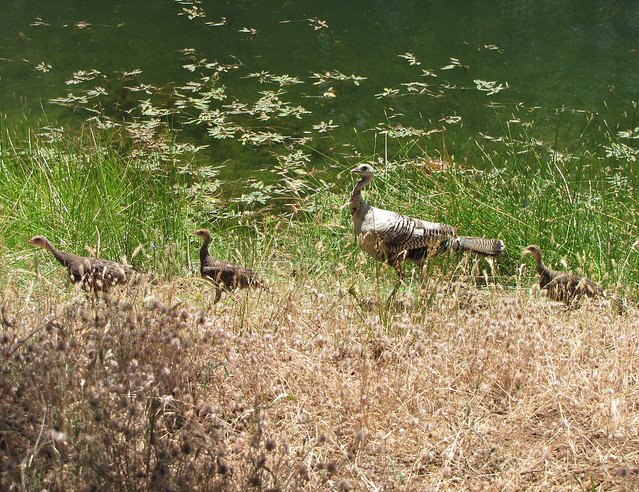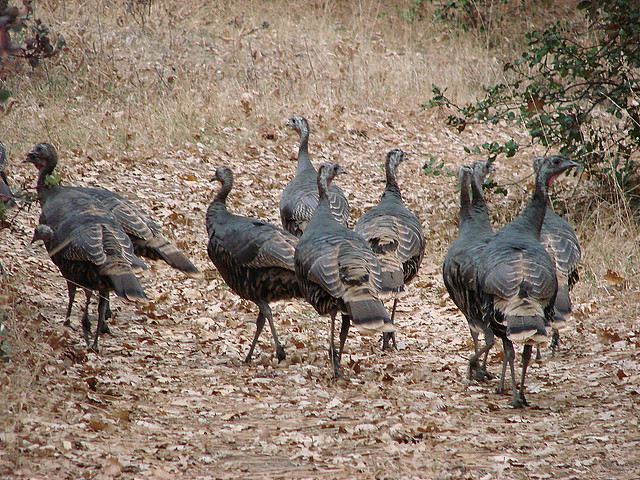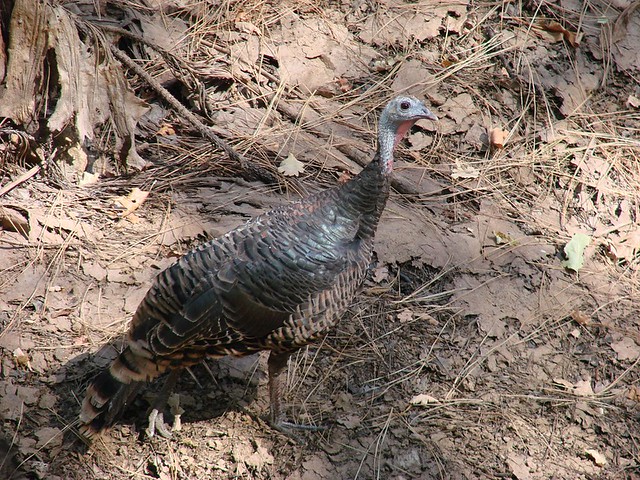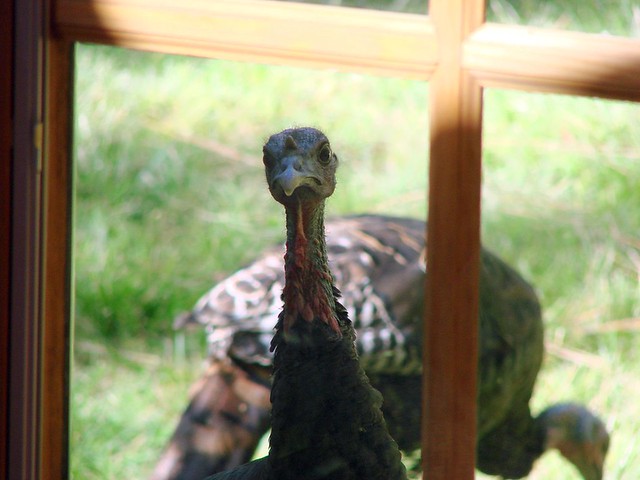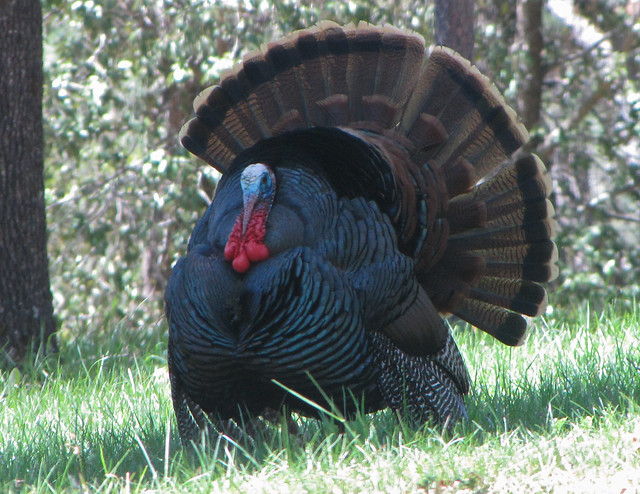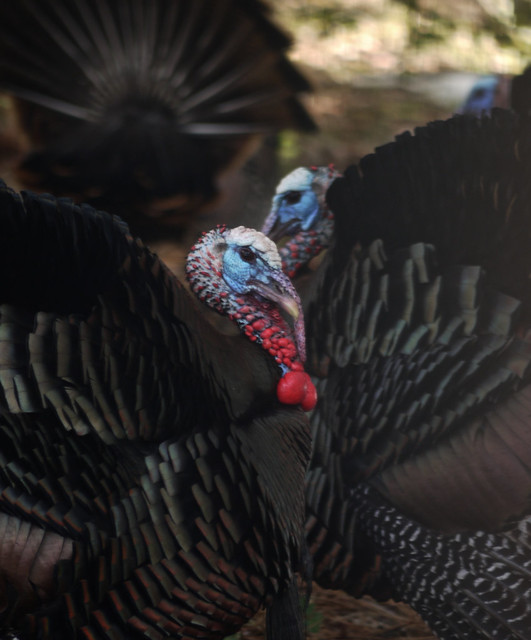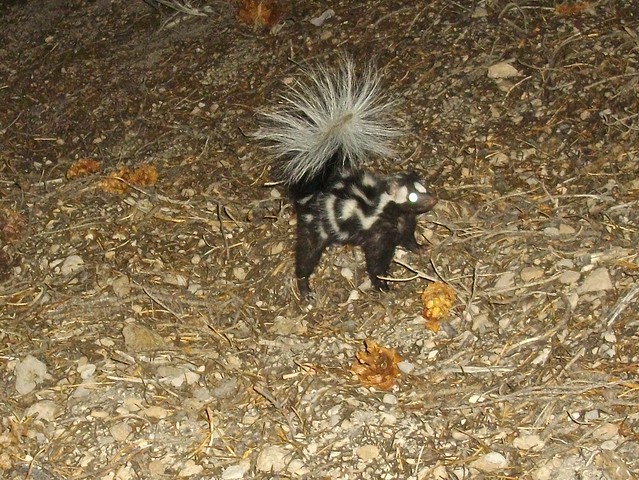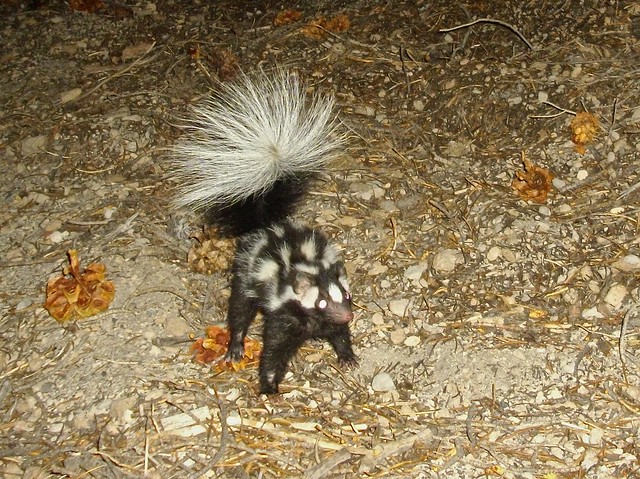Recently, after I set a 10 mega pixel cam trap on a pond edge to try and get wood ducks, one plunked down for a spell to gnaw at an itch.


Small eyes and a huge nasal cavity show these characters get around mostly by nose.
And their skull sure doesn't suggest a lot of brain power - check out that tiny cranium:
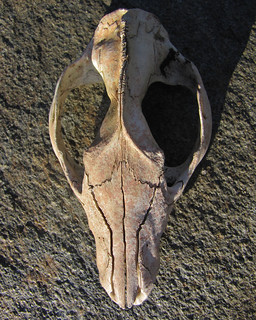
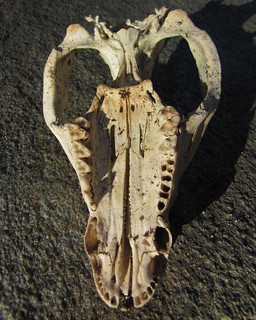
But they do have that prehensile tail, which is pretty cool. Oh - and 50 teeth - the most of any North American mammal.
(if you've ever seen one hiss at you, it seems more like 500).

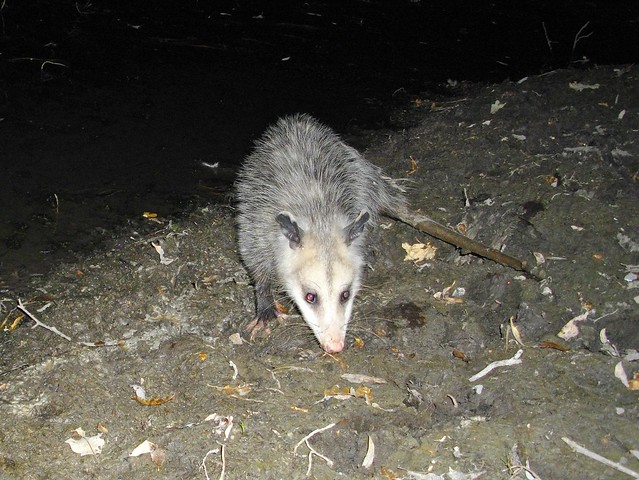
After giving the cam one last glance, possum left.
But then came and went several times more during the night.
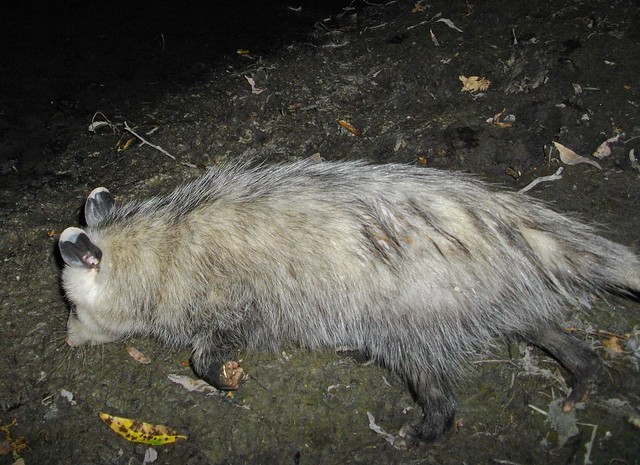
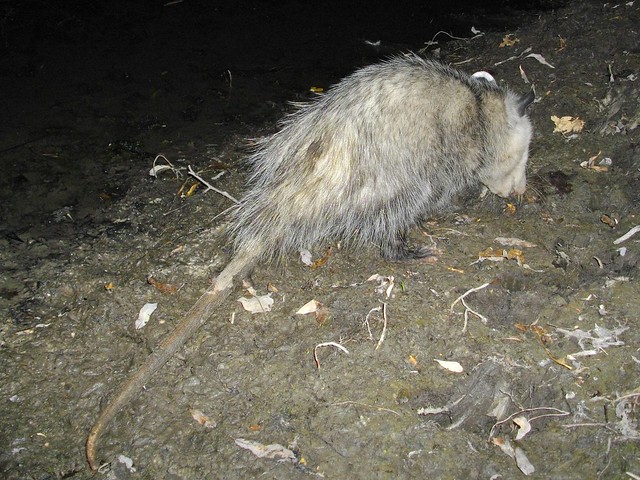
Perhaps hoping for one of these...
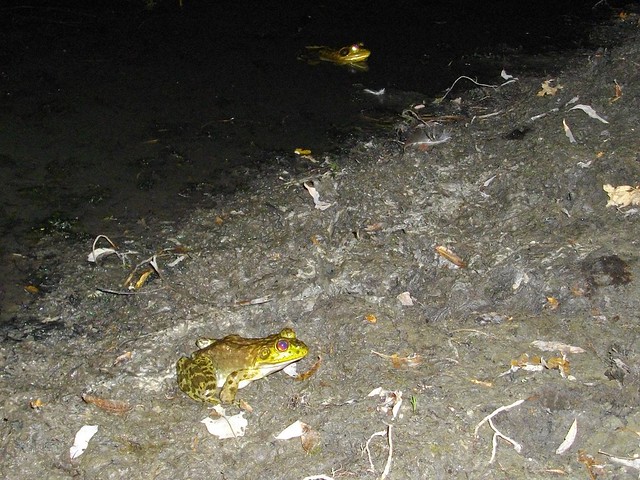
Yet another non-native species introduced to Cali from east of the Rockies for food.
In this case, instead of an omnivore that doesn't generally out-compete or over-eat native species (opossums kinda play well with others) - it's the American bullfrog - an aggressive carnivore that eats anything and everything it can grab and gulp - including insects, crawdads, fish, birds, eggs, mice, tadpoles and other frogs and bullfrogs. And in so doing, unfortunately, bullfrogs have helped decimate California's native red-legged and yellow-legged frogs.
Ah, consequences.

Btw - the bullfrog's ear tympanum shows you their sex - if proportional to their eye-size, it's a female, and if the drum is much larger, it's a male.
Personally, if I had to choose between the two - I'd definitely eat bullfrogs.
Maybe we should start a restaurant that serves "Non-Native Suppression Stir Frys"?
====
References:
- Wikipedia - Virginia Opossum
- Wikipedia - American Bullfrog


